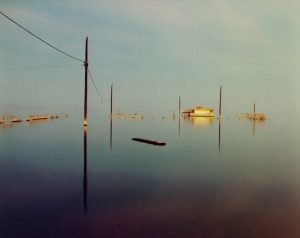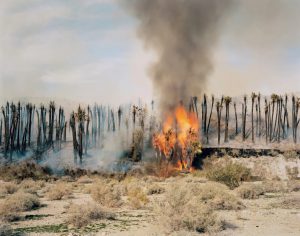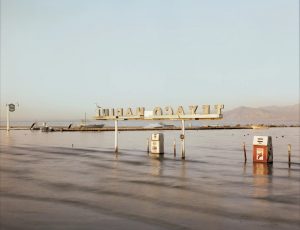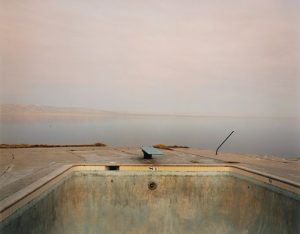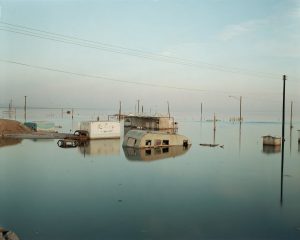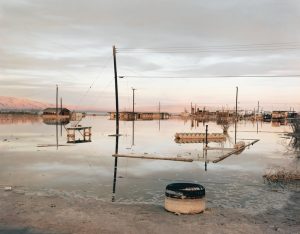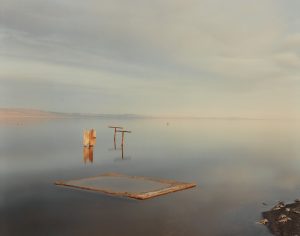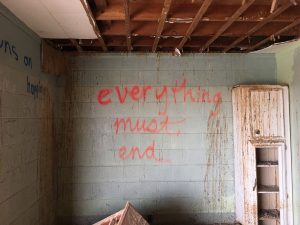Curators' Pick
Richard Misrach | The Desert Cantos series | 1979 - Present
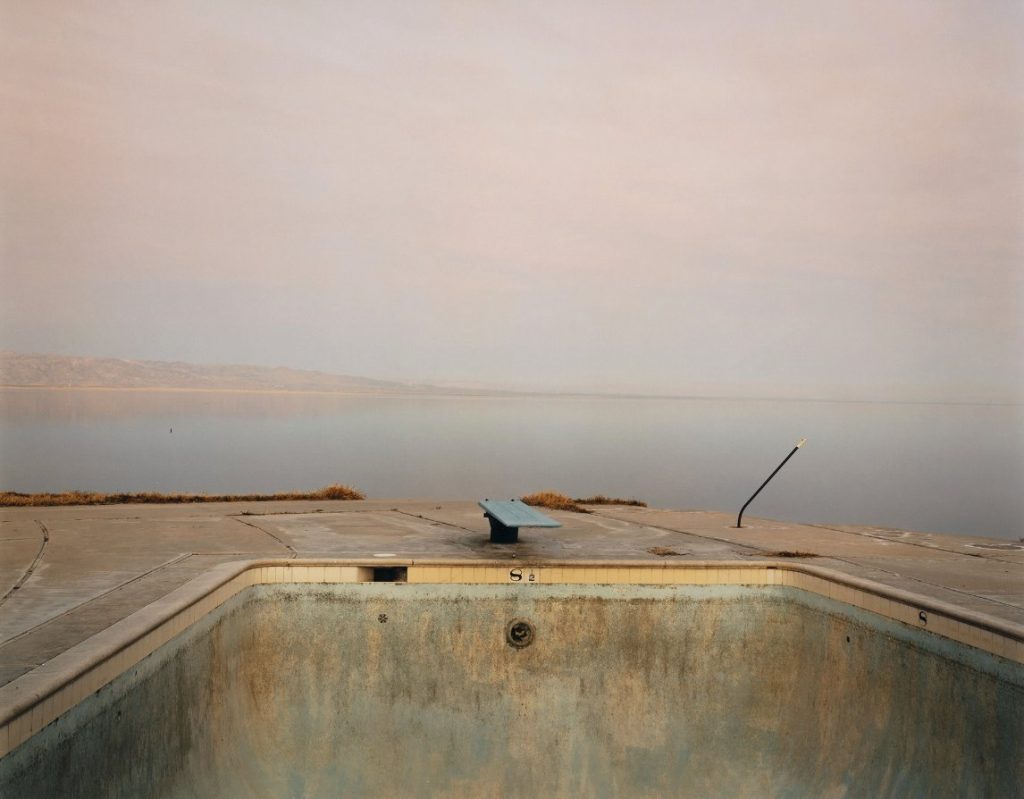
Richard Misrach | The Desert Cantos series | 1979 – Present
You look at landscape, but it’s not really landscape, it’s a symbol for our country, it’s a metaphor for our country.
(Richard Misrach speaking about The Desert Cantos)
If you’ve read my past writing, you won’t be surprised to know that I am a fan of the horror genre, both in terms of books and films. This is an underrated and often unfairly dismissed genre : not all horror is equal, of course, but that can be applied to any genre.
In Clive Barker’s film Lord of Illusions (based upon one of his short stories in the Books of Blood series), the opening sequence of the film has often been one of my favourite scenes in the occult horror tableaux. A cult with a charismatic leader who displays abilities that can only be magic is speaking to an entranced group of followers : their ‘headquarters’ is a long abandoned hotel in the California desert, overgrown and run down, a lone fragment shored against the ruins of a dream of prosperity now left unwanted and desolate, blanched and burned by the unflinching sun and sand. The establishing shots as we approach the derelict buildings are entrancing in their ruination, and the state of the cult members mirrors this sense of discarded abandonment….
- Stranded Rowboat, Salton Sea, 1983
- Submerged Snack Bar, Salton Sea, 1984
- Desert Fire #1 (Burning Palms), 1983
If that seems somewhat ‘lowbrow’ then let us consider Cal Flynn’s book Isles of Abandoment | Life in the Post-Human Landscape and her chapter that is titled The Deluge and the Desert : Salton Sea, California, United States. This is a fine fit as many of Misrach’s images are of the fetid abomination known as the Salton Sea in Southern California.
It is a poison lake whispering sweet nothings. It promises cool succour, quenched thirst. Despite what I know of this shimmering mirage – despite the stink and the rot and the waste that surrounds it, despite the staring eyes of the dead and desiccating fish that litter its shrinking shores, despite the absence of vegetation – I can’t help but quicken my pace. I stumble through sucking mud towards this false vision, on and on until the muck is over my feet, and up to my ankles, and I am shin-deep in a warm broth that, when stirred, releases a draught so stagnant I can taste it.
- Submerged Gas Pumps, Salton Sea, 1983
- Diving Board, Salton Sea, 1983
- Submerged trailer-home, Salton Sea, California, 1985
Richard Misrach began this series in 1979 – nearly half a century ago – and “this ongoing project explores the southwest American desert landscape, and the impact of our human presence.” In that light, considering Misrach’s intent with this work, these images are not so much passive landscapes as active ones : these are scenes of the results of human action and remind me of my time on the Canadian Prairies and the plethora of abandoned oil wells, or the legacy of Uranium City in Saskatchewan, that speak to an attitude towards the environment that is not just an indicator of the Sixth Extinction but our unwillingness to consider the planet as something other than to be exploited and left when no longer of ‘use’, framed within a capitalist regime. As I’m engaged in my usual tangential style of criticism, I must also cite Richard Rodriguez’ essay The God of the Desert where he offers an aside that the three Abrahamic religions – being birthed in the desert – have an adversarial relationship to nature, instead of a more fostering, co dependent one….
Let us return to Clive Barker – specifically his book The Damnation Game (and considering some of the things I’ve mentioned already, citations about horror and hell may seem less forced, now. Ponder that ‘hell’ is a place we make, not a ‘place’ we ‘find’…which is perhaps what Misrach is documenting with these images) :
In a wasteland a few hundred yards from a highway overpass it finds a new incarnation: shabby, degenerate, forsaken. But here, where fumes thicken the atmosphere, minor terrors take on a new brutality.
It had once been an impressive building, and could have been again if its owners had been willing to invest in it. But the task of rebuilding and refurbishing such a large and old-fashioned hotel was probably financially unsound. Sometime in its past a fire had raged through the place, gutting the first, second and third floors before being extinguished. The fourth floor, and those above, were smoke-spoiled, leaving only the vaguest signs of the hotel’s former glamour intact.
- Submerge House Foundation, Salton Sea, CA
- Salton Sea (with Dead Fish), 1983
- Everything must end, Salton Sea Beach, California, 2017
From The International Center of Photography :
Richard Misrach was born in Los Angeles in 1949 and received a BA in psychology from the University of California, Berkeley. He helped popularize large format color photography in the 1970s and 80s and is best known for Desert Cantos, his ongoing study of the American desert and man’s relation to it. The project presents a variety of images, from traditional landscapes to the space shuttle landing, which Misrach considers a singular work, with each canto acting as the equivalent of a (book) chapter heading. Misrach also works in a social documentary style, which can be seen in his Louisiana photographs of Cancer Alley, the corridor between Baton Rouge and New Orleans, and the aftermath of Hurricane Katrina. In addition, he also has taken pictures of the desert sky; the Golden Gate Bridge; the beaches, water, and jungles of Hawaii; Stonehenge; and the Pyramids.
Misrach’s photographs can be found in the collections of the Metropolitan Museum of Art; the Museum of Modern Art; the National Gallery of Art in Washington, DC; and the Whitney Museum of American Art, among others.
More about Richard Misrach’s photographs and aesthetic (both the Desert Cantos series and other works) can be enjoyed here and here.
~ Bart Gazzola

